Are you tired of weak water pressure ruining your shower experience? Tankless water heaters are a great solution to save energy and enjoy endless hot water, but sometimes they can be a bit underwhelming in terms of water pressure.
If you are experiencing low water pressure with your tankless water heater, there are several steps you can take to increase it.
In this article, we’ll share some effective and easy-to-implement tips for increasing water pressure, so you can enjoy a powerful and invigorating shower every time.
Say goodbye to lackluster water pressure, and hello to a revitalizing shower experience. The tankless water heaters experience fewer repairs on average than storage tank water heaters.
Using a water heater doesn’t require stress from storing water in a tank and using energy constantly. There is simply less wear and tear on a tankless water heater because it performs less work.
A tankless water heater restricts flow until the water reaches the desired temperature, so lowering the temperature setting can increase the flow if you find it too low.
A heater that is too small may solve the problem if that doesn’t work. Having too much demand on the plumbing or having narrow pipes will not get you much pressure, regardless of which heater you have.
To avoid the flow dropping whenever someone turns on the water or flushes the toilet in the house, you must avoid such activities while the shower is running.
Ways To Boost Water Pressure From an Electric Water Heater to a Shower
You may find it disconcerting to step into the shower on a cold day, turn on the hot water, and have the water flow so slow you can’t feel it warm your body.
You may be able to adjust the pressure on an electric tank or tankless heater if you have one. If you live in an older house with a poorly constructed plumbing system, you may not be able to do so.
1. Checking the Shower
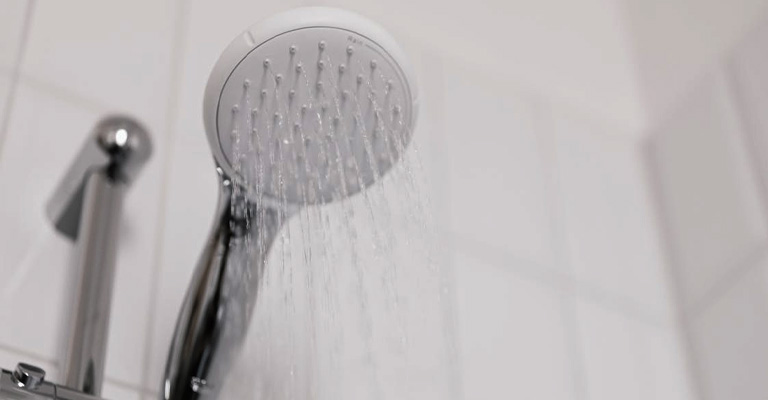
A shower faucet or shower head can cause low water pressure, even if the sink has good pressure. It might have been because the shower valve was partially closed or because the shower head was encrusted with minerals if it was worn out.
If you immerse the shower head in white vinegar overnight, mineral deposits can be dissolved. Minerals may also be soluble in a cartridge after being removed from a single-handle faucet.
Another possibility is that the cartridge is misaligned. The pressure should increase when it is put back in the correct position. It may need to be removed and reinstalled if it does not work.
2. Adjusting Water Pressure
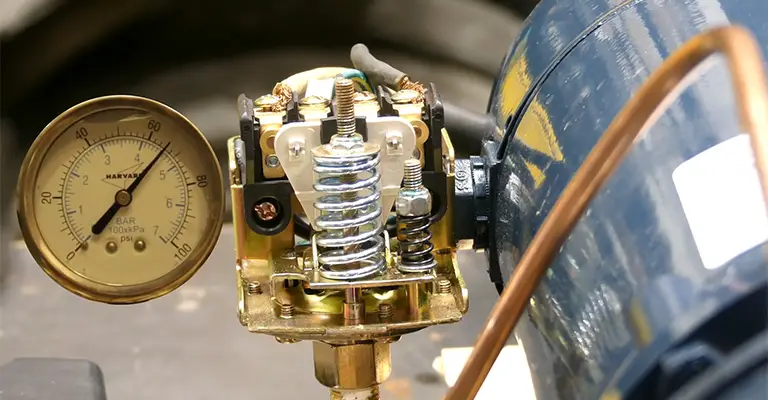
Once you’ve determined corrosion inside the pipes is not to blame for the low pressure, open the valves on the heater as far as possible.
If they are, you should try increasing your house’s water pressure. It is important to locate the pressure regulator on the incoming water line, which is usually a short distance from the water heater.
When you loosen the locknut and turn the adjusting screw clockwise, greater pressure is applied.
Measure the pressure before you start by opening an outdoor faucet and screwing a meter into it. Generally, the ideal pressure should not be more than 45 psi and should not exceed 60 psi.
3. Galvanized Pipes
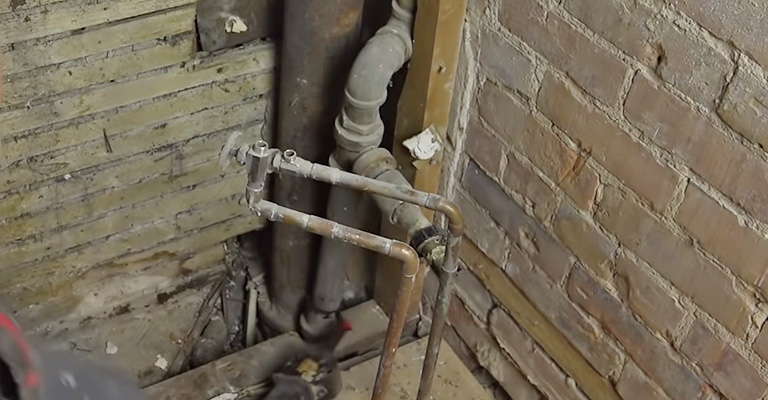
The hot water generated by an electric tank-style water heater should have the same pressure as the cold water entering it.
Your pipes may need repairing if the cold water in the shower has sufficient pressure, but the hot water does not. This is particularly important if you live in an old house with old pipes.
Water flow might be restricted if any of the hot water pipes are galvanized steel.
A remedy that can be applied, even though it is not simple, is to replace the corroded pipes with new ones – preferably copper.
Can A Tankless Water Heater Cause Low Water Pressure?
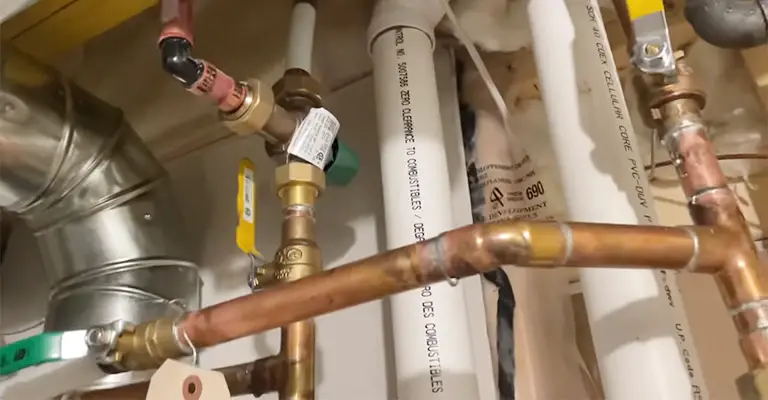
The low water pressure associated with a tankless water heater is true. Your tankless water heater is quite likely the reason for the pressure drop you noticed just after installation.
However, your tankless water heater may also decrease your water pressure after a few years. You might have low water pressure because of your tankless water heater. Here’s how you can solve it.
High Demand
A tankless water heater provides hot water for as long as you need it, but it only produces a certain amount of heat.
Their production is measured in GPM, or gallons per minute. As an example, you probably use several gallons of hot water per minute in your shower.
The GPM used by a dishwasher and a faucet combined might be more than your tankless water heater can handle. If you have lowered your water pressure, you may end up with colder water.
Your home and your requirements should be taken into consideration when choosing a tankless water heater. You can determine what size you need more accurately by consulting a plumber.
Sediment Build-Up
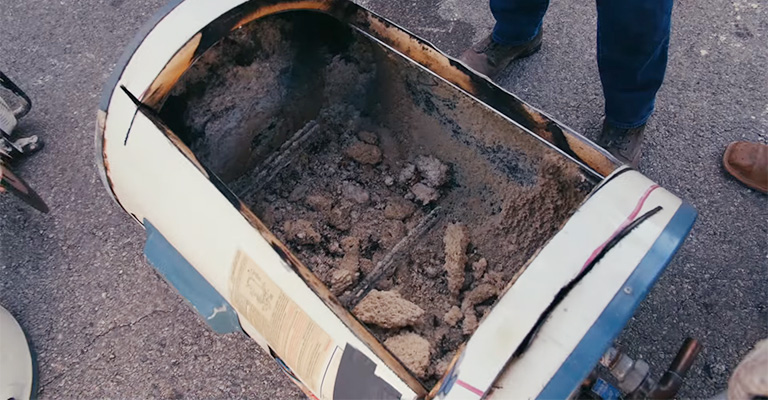
A tankless water heater has fine mesh screens that prevent sediment from building inside the system. It is possible for the sediment to build up on the screen itself, however.
In this case, it can partially block off the water lines, reducing water pressure and water flow. If the filter is just taken out, cleaned, and replaced, a plumber can easily fix this.
Generally, sediment build-up occurs if the water is harder than average or contains more minerals than average. In addition, this can also affect other appliances and even your faucet aerators.
Water softeners can remove minerals before your tankless water heater or the water contacts other appliances.
The Shut-Off Valve
An electric valve shuts off the water flow on all tankless water heaters. It is designed for safety when a problem with the heater, such as a leak, occurs like it is with other water-based appliances.
You may, however, have to close the valve slightly during installation or maintenance by your plumber. Alternatively, you, your child, or your pet may have jostled it.
When even partially closed, it is impossible to receive enough water into the heater. The result is that you have lowered water pressure.
In this case, all you need to do is turn on the tankless water heater and open the valve up. The plumber can locate it for you if you’re unsure how to find it.
Other Things That Can Go Wrong With A Tankless Water Heater
While tankless water heaters can be an excellent investment for many households, they also have their downsides. There are also a few other things that can go wrong with a tankless water heater that you should be aware of besides low water pressure.
Low Water Pressure
Through a heat exchanger, a tankless water heater transfers heat from gas jets into the water from the supply line.
The outlets of a tankless system can become clogged due to deposits inside the heat exchanger. There might be clogs in your water pipes that are causing low water pressure from your hot water faucets.
These deposits are typically caused by hard water. For further prevention, you may need to have a water softener installed in the house. Technicians can remove obstructions and install a softener.
Gas Ignition Problems
It is also possible for a tankless system to fail in the same ways as a standard gas water heater or furnace.
As a result of dirt on the gas jets, they can fail to ignite fully or even not ignite at all. There will be no hot water if the electronic ignition system breaks, so you won’t be able to use the water heater at all.
Leaks In The Heat Exchanger
Tankless water heaters are susceptible to leaks within the heat exchanger. The escaping water may cause corrosion to the system when this occurs. In almost every case, corroded water heaters need to be replaced.
You can potentially harm your house if the tankless water heater does not properly vent exhaust gases from the heat exchanger. Whenever you see corrosion on your tankless water heater, have a professional repair it.
Final Words
Numerous factors could lead to low water pressure, not just your tankless water heater. In your home, you may have valves that are affecting the water pressure.
Further, you could have a malfunctioning pressure regulator, or an appliance or faucet part may be causing the problem. To identify the root cause of your problems, you should call a plumber.







